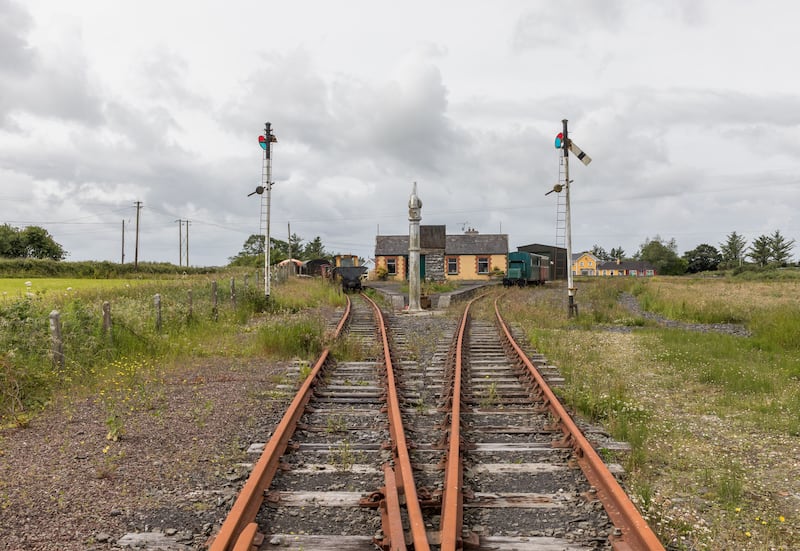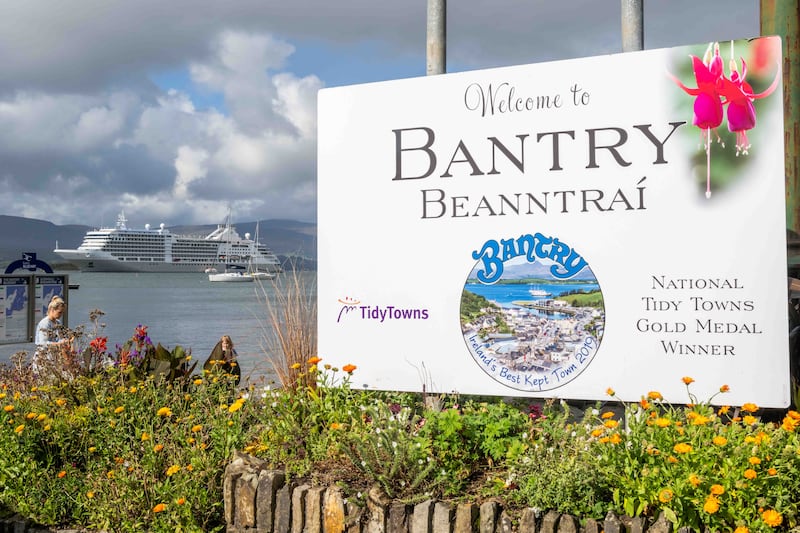The Camino in Spain may have more travel guides devoted to it, but here in Ireland we have a long-distance way of our own, far more extensive (and indeed far more dramatic) than that ancient pilgrim route. Just to give you some idea, the Camino is some 800km in length from the Pyrenees to Santiago de Compostela; our Wild Atlantic Way is more than 2,600km.
It is, in fact, one of the longest defined coastal routes in the world. Stretching from Kinsale in Co Cork to Derry in the far north, it encompasses all that is most breathtaking about our wave-washed coastline, where the sea has carved and indented over thousands of years, creating sheer cliffs and sandy beaches, deep inlets and rugged promontories.
Be warned, the entire route is a huge undertaking, but you don’t have to do it all in one trip or by one method of transport! Whether walking, cycling, taking the bus or driving, it’s just a great place to dip into. The main thing is, first, to realise what a national treasure this Way is, and second, to get out there and explore it.

Where to start? At the top or the bottom – the Inishowen Peninsula in Donegal or the coast of West Cork? Halfway through, in Galway of the Tribes, or the sandy beaches of Lahinch in Co Clare? The highest cliffs in Europe or our country’s only cable car? Granuaile’s castles or Daniel O’Connell’s home? Islands or museums? They’re all there.
READ MORE
The best thing might be to find an area you really don’t know very well or at all, whether north, west, or south, and make that your destination region for this autumn or winter exploration. Wherever you choose, you can be sure of finding great hotels, wonderful restaurants, welcoming guest houses, friendly bars and cafes, and, maybe best of all, new friends to make and keep. The pictures you take, the experiences you gain, the scenery that lifts your soul to new heights – will all remain with you forever.
To make the choice easier, let’s divide this magnificent long-distance route into four sections: Donegal to Mayo; Mayo to Clare; Clare to Kerry; and Kerry to Cork.
Donegal to Mayo
The Wild Atlantic Way officially starts in the feisty little walled town of Derry on Lough Foyle, with the cannons lining its ramparts a tribute to its turbulent past. From here, head up the beautiful Inishowen Peninsula and Malin Head, the most northerly point in Ireland. Here you can see Inishtrahull Island, which holds a great smuggling history. Down by Letterkenny and on to views of Tory Island from Fanad Head, there are several ferry services offering trips to both Tory and Gola from harbours along this stretch of coast.
The Sliabh Liag sea cliffs in Donegal are among the highest in all of Europe.
Whatever you do, don’t miss Sliabh Liag – at more than 600m, the highest cliffs in all Ireland and some of the highest in Europe. There is an accurately named One Man’s Path leading up and over these dizzying cliffs – definitely not one to be tried by those suffering from vertigo. From here, follow south to Donegal town and then on to lively Killybegs with its crowded harbour of trawlers showing that the fishing industry is alive and well. Cross the county bounds for Sligo, and head out to the ancient Céide Fields, where our far ancestors tilled the soil thousands of years ago. Then into Mayo and the Mullet Peninsula, of which Percy French wrote so movingly:
And I never can forget you, though it’s oh so long ago,
In the bog below Belmullet, in the county of Mayo…
The harsh beauty of this countryside is unforgettable, and must have stayed in the minds of so many who were forced to leave to seek their fortune in far-off lands.
Achill Island is easily reached these days by a bridge from the mainland, and boasts spectacular beaches as well as a deserted village and one of Granuaile’s many castles. Granuaile, that great sea pirate queen, favoured Clare Island in Clew Bay (and is said to be buried there), but to get a good idea of what she really looked like, head for the gardens of Westport House, where there is a splendid statue. Look out too for the lofty hill of Croagh Patrick, with its many winding tracks worn by pilgrims throughout the years.
Mayo to Clare
Killary Harbour is one of Ireland’s very few genuine fjords, a long sea inlet, with Leenane, long a Mecca for fishermen, at its base. This is Connemara, which perhaps encapsulates all the yearning images of Ireland: whitewashed cottages, blue mountains, stone bridges and the soft brown of turf bogs. In fact, Derrigimlach Bog near Clifden is where Alcock and Brown crash-landed on the first transatlantic flight from Newfoundland. Wander the winding lanes around the coast to Roundstone and come to historic Spiddal and Galway city. Or take a voyage out to the three Aran Islands: Inishmore, Inishmaan and Inisheer. You will find enough out there to fascinate you for days. Then head for Doolin in Co Clare to hear some of the best fiddle music in the land.
Clare to Kerry
The Burren, that strange stone landscape, is said to have inspired Tolkien, who spent many holidays there (did Poulnagollum Cave suggest the name for one of his anti-heroes?). It’s another of those unforgettable places, where what seems like blank stone pavement actually hides rare wild flowers within little niches and grykes. Lahinch is famous for its splendid beach and surfing. Kilkee has been a summer holiday resort since Victorian times. The West Clare Railway once puffed its way through here, and you can still see remnants of its famous line in places. The railway company used to put heavy weights into the carriages on wild days to ensure the train didn’t tip over when traversing the windy coastal stretches! There is a museum to this legendary train at Moyasta. The dramatic cliffs of Loop Head, the westernmost point in Co Clare, not only boast a wonderful lighthouse, but also featured in a Star Wars film.

Crossing the Shannon from Killimer to Tarbert, from Clare to Kerry, is something everybody should experience. Being out on this mighty stretch of water (which here feels more like the sea) gives your journey that great sense of adventure. Once safely on the Kerry side, take a trip upriver to Foynes Flying Boat museum for a peek into the past. It has the world’s only full-size replica of a B314 flying boat.
Ballybunion has the most splendid bay and beach, peaceful now that the summer crowds have left. Tralee not only hosts the famous Rose festival each year, but also maintains a marvellous 19th century canal. From here begins one of the truly breathtaking experiences of the Wild Atlantic Way – the Slea Head drive, by lively little Dingle, full of shops, pubs, and happy people, to Dunquin, and your first views of the legendary Blasket Islands. There was a time when visiting these could only be undertaken on the calmest days, but today’s ferries will undertake the short crossing at most times, and you can wander on the well-worn grass tracks leading from cottage to cottage, and remember the writings of such greats as Peig Sayers, Tomás O’Crohan and Muiris Ó Súilleabháin. Better still, buy copies of their books to refresh your memory in the Blasket Centre on the mainland.
Further along the coast, you’re offered breathtaking glimpses of the Skelligs rising from the sea. Skellig Michael was a religious site for centuries, but before that was an ancient druidic site of power. Little Skellig is a haven for wild birds, especially gannets. You might be able to visit by boat – it depends not only on the weather, but also the crowds, drawn there by Skellig Michael’s brief appearance, again, in a Star Wars movie. Valentia Island, further on, can be reached by bridge though. This was where the first commercially viable transatlantic cable was laid, reaching far across to Newfoundland.

Killorglin is famous for Puck Fair, held on the same three days in August since ancient times. This is the occasion on which a wild goat (echoing very old druidic rites) is hoisted to a high platform and fed and cared for there during the fair, later to be released back into the mountains. Now we’re on the Ring of Kerry. Derrynane was the home of the Liberator, Daniel O’Connell, and his family home can be visited, plus the bay where, it is said, his family occasionally practised a bit of smuggling to and from France.
Kerry to Cork
And so on to Sneem and Kenmare, where it is tempting to linger awhile in the shops and cafes. But the Beara Peninsula beckons, with, at its very tip, Dursey Island, and the only cable car in the country. It’s a swaying trip across from the mainland to the island, but worth it for the experience. On the way back, call to see An Cailleach Beara, the Hag of Beara, and pay your respects to this ancient stone which represents the female deity controlling the life and fertility of land and sea. The rich micro-climate of Glengarriff makes it a haven for rare and delicate plants, nowhere more than on Garnish Island, where superb Italian gardens are lovingly tended.
Bantry town is a great base from which to explore Sheep’s Head and Dunmanus Bay, before heading out to Mizen Head, held by most to be the southernmost point in Ireland (actually Brow Head, a stone’s throw away, is slightly ahead). The crashing waves here are exceptionally dramatic after a storm, and the old signal station can be visited. The wide golden beach of Barley Cove is rightly famous, and everybody ends up in Crookhaven at the end of the day to enjoy local seafood and chat over drinks.

Baltimore is where the ferries for Sherkin and Cape Clear depart, or you can just enjoy wandering along the quaysides and admiring the O’Driscoll castle. Then it’s on to Skibbereen, Clonakilty, all the beauties of the Seven Heads, and more beaches than you could possibly explore, before the long peninsula of the Old Head of Kinsale – a beacon for mariners for untold centuries – tells you that you are nearing the end of your journey. The bustling town of Kinsale, long famed as a destination for gourmets with its many famous restaurants, also awaits.
Now it’s time to sit down, relax and plan your next exploration of The Wild Atlantic Way!















